The Cookie Jar Dilemma: Can Cats Eat Oreos? A Stern Vet-Reviewed Warning
- 11 Apr 2025 16:24
Picture this: you're relaxing with a glass of milk and a sleeve of Oreos, the classic comfort cookie. Your feline friend hops onto the sofa, perhaps nudging your hand or gazing intently at the black and white treat. A fleeting thought might cross your mind: "Just a tiny nibble couldn't hurt, right?" This leads many well-meaning pet owners to ask the crucial question: can cats eat Oreos? While sharing our snacks can feel like bonding, when it comes to processed human foods like Oreos, the answer for our obligate carnivore companions is a resounding, emphatic **NO**.
Oreos, despite their deliciousness to humans, are a cocktail of ingredients that range from nutritionally inappropriate to downright toxic for cats. Their systems are simply not designed to handle the sugar, fat, chocolate, and other components packed into these popular cookies. This comprehensive guide, adhering to E-E-A-T standards (Experience, Expertise, Authoritativeness, Trustworthiness) and based on veterinary knowledge, will break down exactly why Oreos are unsafe for cats, detailing the harmful ingredients, potential health consequences, and what to do if accidental ingestion occurs. Protecting your cat means understanding the dangers lurking in seemingly innocent human treats.
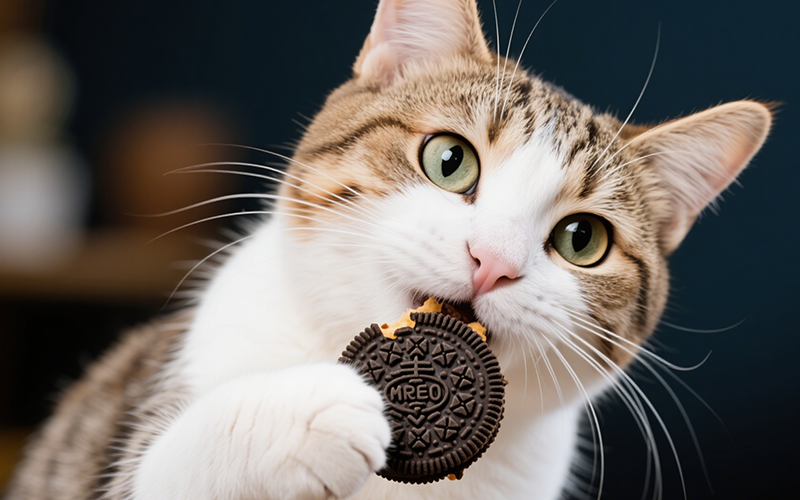
Deconstructing the Oreo: What's Actually Inside?
To understand why Oreos are bad for cats, let's look at their typical ingredients (note: specific formulations may vary slightly):
Sugar: Often the first or second ingredient, providing the sweetness humans crave but offering no nutritional value and potential harm to cats.
Unbleached Enriched Flour: A processed carbohydrate base, unnecessary and poorly digestible for cats.
Palm and/or Canola Oil: High levels of fat, contributing to the cookie's texture and calorie density, but problematic for feline digestion in large amounts.
Cocoa (Processed with Alkali): This is the source of the chocolate flavor and, more importantly, contains theobromine and caffeine – substances toxic to cats.
High Fructose Corn Syrup: Another form of concentrated sugar.
Leavening Agents (Baking Soda, Calcium Phosphate): Used for texture.
Salt: Added for flavor balance.
Soy Lecithin: An emulsifier.
Artificial Flavor: Provides the characteristic "Oreo" taste.
Chocolate: Often listed separately, reinforcing the presence of cocoa derivatives.
Looking at this list through the lens of feline nutrition immediately raises multiple red flags. There is virtually nothing in an Oreo cookie that aligns with a cat's natural dietary needs.
Obligate Carnivores vs. Processed Cookies: A Biological Mismatch
Cats are **obligate carnivores**. This isn't just a dietary preference; it's their fundamental biology. Their bodies are exquisitely adapted to thrive on a diet rich in animal protein and fat, with minimal carbohydrates.
Protein Power: Cats require high levels of specific amino acids found abundantly in meat (like taurine) for everything from vision and heart health to muscle maintenance. Oreos provide negligible useful protein.
Fat Facts: While cats utilize fat for energy, the types and amounts found in processed foods like Oreos (often plant-based, highly processed fats) are not ideal and can overwhelm their system.
Carb Caution: Cats have very limited physiological need for carbohydrates. Their digestive system lacks key enzymes (like salivary amylase and efficient pancreatic amylase) to break down carbs effectively. Sugars and starches offer empty calories and can disrupt their metabolism and digestion.
Taste & Nutrition Drive: Cats lack sweet taste receptors. They are primarily driven by the smell and taste of amino acids and fats found in meat. An Oreo doesn't provide the nutritional signals their bodies crave.
Feeding a cat an Oreo is like putting gasoline in a diesel engine – the fuel type is fundamentally wrong and can cause significant problems.
The Definitive Answer: WHY Cats Cannot Eat Oreos
Let's be unequivocally clear: **Oreos are unsafe and potentially toxic for cats.** Allowing your cat to eat even a small amount is strongly discouraged due to multiple harmful components. The primary dangers include:
Chocolate Toxicity (Theobromine & Caffeine)
Excessive Sugar Content
High Fat Content
Artificial Ingredients & Lack of Nutrition
Potential for Xylitol (Less common in standard Oreos, but a risk in other "sugar-free" treats)
Lactose Intolerance (Cream Filling)
Even if a tiny crumb doesn't cause immediate, severe poisoning, it offers zero benefits and exposes your cat to unnecessary risks and ingredients their bodies cannot properly handle.
The Dangerous Ingredients in Detail: Why Oreos Harm Cats
Understanding the specific effects of key Oreo ingredients highlights the danger:
1. Chocolate Toxicity (Theobromine and Caffeine)
This is the most significant acute toxicity risk. Oreos contain cocoa solids, which provide the chocolate flavor. Cocoa contains methylxanthines, primarily theobromine and caffeine.
Cats are Highly Sensitive: Cats metabolize theobromine much slower than humans, allowing it to build up to toxic levels quickly.
Mechanism of Action: These compounds stimulate the central nervous system and heart muscle, and increase urination.
Symptoms of Chocolate Poisoning in Cats: Even small amounts can cause symptoms, which may appear within hours. These include:
Vomiting
Diarrhea
Increased thirst and urination
Restlessness / Hyperactivity
Increased heart rate (tachycardia)
Muscle tremors
Seizures
Heart arrhythmias
Coma
In severe cases, death.
Dosage Matters: While the amount of actual cocoa in a single Oreo might be relatively low compared to dark chocolate, a cat's small body size means even this amount can potentially cause mild symptoms. Ingesting multiple cookies or licking a significant amount of filling significantly increases the risk of serious poisoning.
The presence of theobromine and caffeine alone makes the answer to "can cats eat Oreos?" a firm NO.
2. Excessive Sugar Content
Oreos are loaded with sugar (including high fructose corn syrup).
Digestive Upset: A cat's digestive system isn't designed for sugar. Ingesting sugary foods often leads to osmotic diarrhea (water being drawn into the intestines), gas, vomiting, and abdominal discomfort.
Empty Calories: Sugar provides calories with no essential nutrients for a cat, contributing to weight gain.
Obesity and Diabetes Risk: Chronic consumption of sugary treats contributes significantly to feline obesity, which in turn increases the risk of developing serious conditions like diabetes mellitus, arthritis, and urinary issues.
3. High Fat Content
The fats used in Oreos contribute to their palatability but are problematic for cats.
Gastrointestinal Issues: High-fat foods can overwhelm the feline digestive system, leading to vomiting, diarrhea, or greasy stools.
Pancreatitis Risk: A sudden intake of high-fat food is a known risk factor for pancreatitis in cats. This is a painful and potentially life-threatening inflammation of the pancreas that requires immediate veterinary care.
4. Artificial Ingredients and Fillers
Oreos contain various artificial flavors, emulsifiers (like soy lecithin), and processed flour.
Lack of Nutrition: These ingredients offer no nutritional value for an obligate carnivore.
Potential Sensitivities: Some cats may be sensitive to artificial additives or soy, leading to digestive upset or skin issues.
5. Xylitol Risk (A General Caution)
While standard Oreos don't typically list xylitol, it's crucial to be aware of this artificial sweetener found in many "sugar-free" human products (candies, gum, baked goods). Xylitol is **extremely toxic** to dogs and potentially harmful to cats (though less well-documented, caution is advised). It causes a rapid release of insulin, leading to hypoglycemia (dangerously low blood sugar), and can also cause liver failure. Always check ingredient lists on human treats if accidental ingestion occurs.
6. Lactose Intolerance (Cream Filling)
The creamy filling likely contains dairy derivatives. Most adult cats are lactose intolerant, meaning they lack sufficient lactase enzyme to properly digest lactose (milk sugar).
Symptoms: Ingesting dairy can cause gas, bloating, diarrhea, and abdominal pain in lactose-intolerant cats.
"My Cat Ate an Oreo!" – What Should I Do? (Action Plan)
Accidents happen. If you discover your cat has eaten part of an Oreo, follow these steps:
1. Don't Panic, Assess: Stay calm. Try to determine how much your cat ate (a tiny crumb vs. a whole cookie) and which part (cookie vs. filling). Note the time of ingestion if possible. 2. Remove Access: Immediately secure any remaining Oreos or wrappers well out of your cat's reach. 3. Check Ingredients (If Possible): If it was a specific type of Oreo (e.g., different flavor, sugar-free variant), check the packaging for ingredients like xylitol, if available. 4. Call Your Veterinarian or Pet Poison Helpline IMMEDIATELY: This is the most crucial step, even if your cat only ate a small amount or isn't showing symptoms yet. They need information to assess the risk: * Your cat's approximate weight. * How much Oreo was ingested (best estimate). * When it was ingested. * Any symptoms your cat is showing. * Be prepared to provide ingredient information if you have it. * **Do not wait for symptoms to appear**, especially concerning chocolate toxicity, as early intervention is key. Reputable resources include the ASPCA Animal Poison Control Center and the Pet Poison Helpline (fees may apply). 5. DO NOT Induce Vomiting: Never try to make your cat vomit at home unless specifically instructed to do so by a veterinary professional. It can be ineffective or dangerous depending on the situation. 6. Monitor Closely: Follow your vet's specific instructions. Watch diligently for any symptoms of toxicity or digestive upset listed below.
Symptoms of Oreo Toxicity / Adverse Reactions in Cats
Be vigilant for these signs after potential Oreo ingestion:
Gastrointestinal Upset (Common, from sugar/fat/lactose): Vomiting, diarrhea, gas, abdominal pain, loss of appetite.
Chocolate Toxicity Symptoms (More Serious): Restlessness, hyperactivity, muscle tremors, rapid heart rate, increased thirst/urination, panting, seizures.
Pancreatitis Symptoms (Serious): Persistent vomiting, severe abdominal pain (hunched posture), lethargy, dehydration, fever.
Any sign of chocolate toxicity or suspected pancreatitis requires immediate emergency veterinary care. Even mild GI upset warrants a call to your vet.
Prevention: The Best Medicine Against Oreo Dangers
Keeping your cat safe from Oreos and similar treats is straightforward with a little vigilance:
Secure Storage: Keep Oreos, cookies, chocolate, candy, and other human snacks securely stored in pantries, cupboards, or containers that cats cannot access.
Countertop & Table Awareness: Never leave packages of Oreos or plates with cookies unattended where a curious cat might reach them.
Dispose of Wrappers Properly: Cats may lick wrappers, ingesting harmful residues. Dispose of them in a sealed trash can.
Educate Household Members & Guests: Ensure everyone understands that Oreos are bad for cats and should never be offered, even as a tiny treat. Explain the dangers of chocolate toxicity.
Supervise Children: Teach children not to share their snacks with pets.
Provide Safe Alternatives: Offer species-appropriate cat treats to satisfy their desire for a special snack.
Ditch the Dunking: Safe & Healthy Cat Treat Alternatives
Instead of risking your cat's health with Oreos, provide treats that are actually good for them:
Commercial Cat Treats: Look for high-quality brands with meat as the primary ingredient and minimal fillers or artificial additives.
Small Pieces of Cooked Meat/Fish: Plain, unseasoned, cooked chicken, turkey, lean beef, or fish (like salmon or tuna packed in water, not oil) are excellent choices. Ensure no bones.
Freeze-Dried Meat Treats: Single-ingredient options (chicken, liver, salmon) are highly palatable and species-appropriate.
Dental Treats for Cats: Some treats are specifically designed to help reduce tartar buildup.
Catnip or Silver Vine: As an occasional herbal treat/enrichment for cats who respond to it.
Lickable Cat Treats: Often come in tubes or pouches and are highly motivating for many cats.
These options provide enjoyment and sometimes nutritional benefits without the dangers posed by Oreos and cats.
Veterinary Consensus: Oreos are Off-Limits for Felines
Veterinarians and animal poison control experts are unified in their stance: Oreos are not safe for cats. The combination of chocolate (theobromine/caffeine), high sugar, high fat, and other inappropriate ingredients poses significant health risks, ranging from temporary digestive upset to severe, life-threatening toxicity or pancreatitis. The advice is always to prevent access entirely and never intentionally offer Oreos or similar processed human sweets to cats. There is no nutritional benefit, only potential harm.
Oreos and Cats: Quick Safety Summary Table
| Aspect | Safety Information Regarding Oreos and Cats |
| Can Cats Eat Oreos? | **NO.** Oreos are unsafe and potentially toxic to cats. |
| Primary Dangers | Chocolate Toxicity (Theobromine/Caffeine), High Sugar, High Fat. |
| Harmful Ingredients | Cocoa/Chocolate, Sugar, High Fructose Corn Syrup, Processed Fats, Artificial Ingredients, Salt. |
| Symptoms of Toxicity/Upset | Vomiting, diarrhea, hyperactivity, tremors, rapid heart rate, seizures (chocolate); GI upset, pancreatitis risk (fat/sugar). |
| Nutritional Value for Cats | None. Contains empty calories and harmful substances. |
| Action if Eaten | Assess amount, remove access, Call Vet/Poison Control IMMEDIATELY (do not wait for symptoms). |
| Prevention | Secure storage of human snacks, countertop vigilance, educate household. Keep Oreos away from cats. |
| Safe Alternatives | Commercial cat treats, cooked meat, freeze-dried treats, catnip. |
Quick Pet Health Questions or Concerns? PettureX Can Help!
Worrying about whether your cat ate something harmful, like an Oreo, can be stressful. Getting fast, reliable information is crucial when you're concerned about potential poisoning or unusual symptoms. While immediate veterinary contact is paramount in emergencies, having supportive tools can also be helpful.
The PettureX App offers innovative features for concerned pet parents:
24/7 AI Vet Consultation: Have an urgent question like "How much Oreo is dangerous for a cat?" or need quick guidance on symptoms like vomiting or tremors? PettureX's AI provides immediate responses and helps you assess the situation's urgency, any time.
Image Recognition: While not for diagnosing internal issues, it can help identify your pet's breed or assess visible concerns like skin conditions or eye discharge.
AI-Powered Symptom Checker: Input your cat's symptoms for an AI analysis of potential causes and recommended actions, helping you communicate effectively with your vet.
Fast Solutions Database: Quickly access information on common pet health topics, toxins, and care needs.
PettureX is designed to be a helpful companion tool, offering quick access to AI-driven information and support, complementing the essential care provided by your veterinarian.
Conclusion: Keep the Oreos for Yourself, Protect Your Cat
In conclusion, the answer to "can cats eat Oreos?" is a clear and definitive no. These cookies offer absolutely no nutritional value for cats and contain multiple harmful ingredients, including potentially toxic chocolate (theobromine/caffeine), excessive sugar leading to GI upset and long-term health risks, high fat content risking pancreatitis, and various artificial components.
Protecting your feline friend involves strict prevention: keeping Oreos and all similar human treats securely stored and inaccessible. Educate everyone in your household about the dangers. If accidental ingestion occurs, contact your veterinarian or a pet poison helpline immediately – don't wait for symptoms to manifest.
Choose safe, species-appropriate treats to show your cat affection. Their health and well-being depend on providing them with a diet suited to their obligate carnivore nature, and that diet certainly doesn't include Oreos.
Related

Marshmallows and Cats: A Puffy Problem? Why Vets Say No to This Sugary Snack
- 22 Apr 2025
Kefir for Kitties? A Veterinarian-Reviewed Guide to Safety, Benefits & Risks
- 22 Apr 2025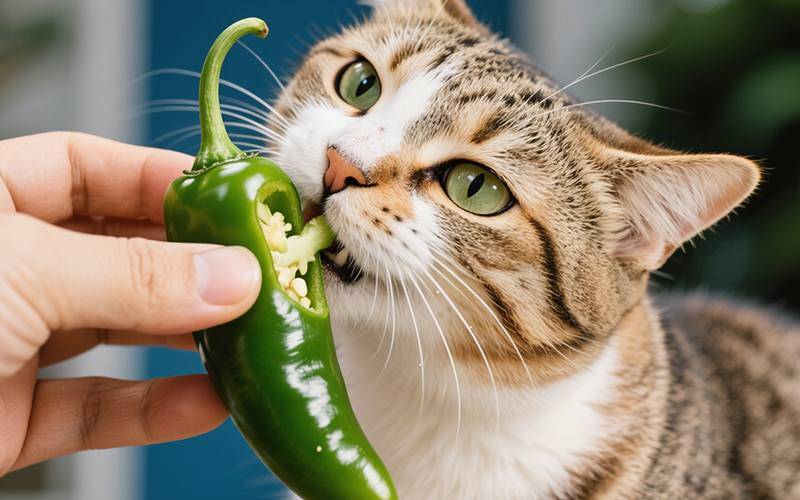
The Burning Question: Can Cats Eat Jalapenos? A Comprehensive Safety Guide
- 21 Apr 2025
Cool Temptation: Can Cats Eat Ice Cream Safely? The Vet-Backed Truth
- 21 Apr 2025
Frankly Dangerous: Can Cats Eat Hot Dogs? Vet Explains the Serious Risks
- 16 Apr 2025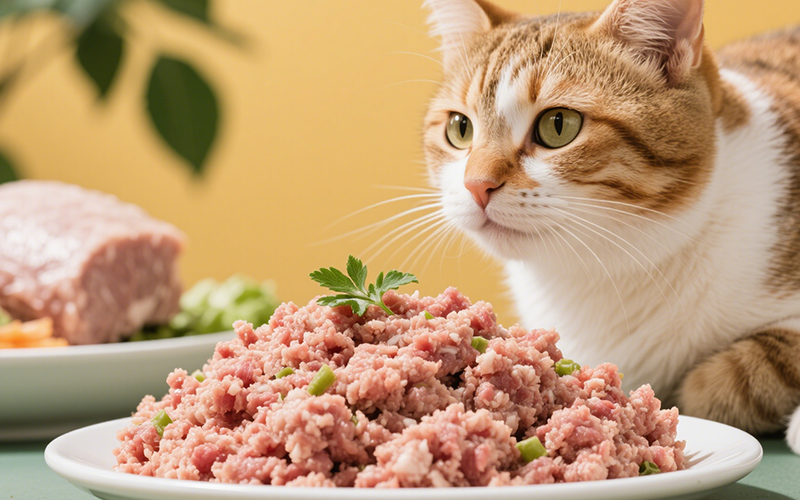
A Purrfect Protein? Can Cats Eat Ground Turkey Safely? (Vet-Reviewed Guide)
- 16 Apr 2025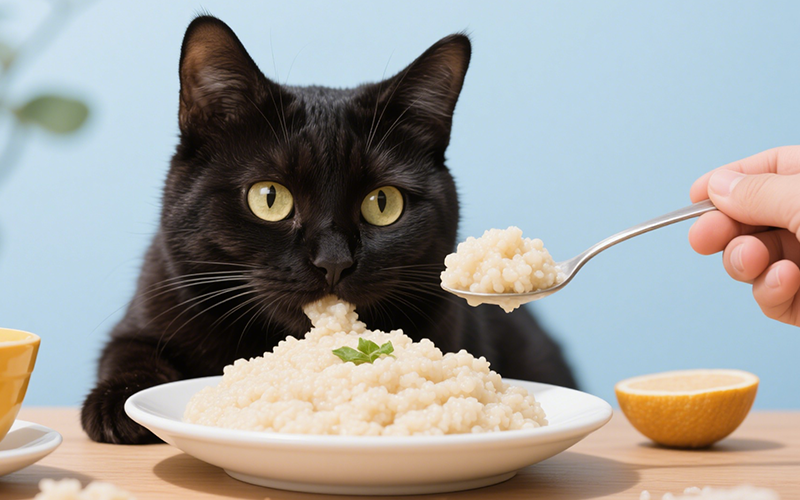
Gritty Situation: Can Cats Eat Grits Safely? Vet Explains the Risks
- 16 Apr 2025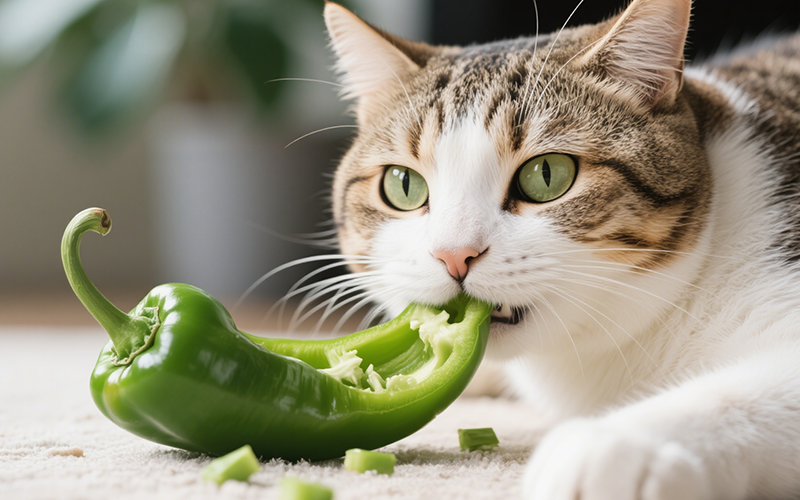
Crunchy Query: Can Cats Eat Green Peppers? A Vet-Reviewed Safety Analysis
- 16 Apr 2025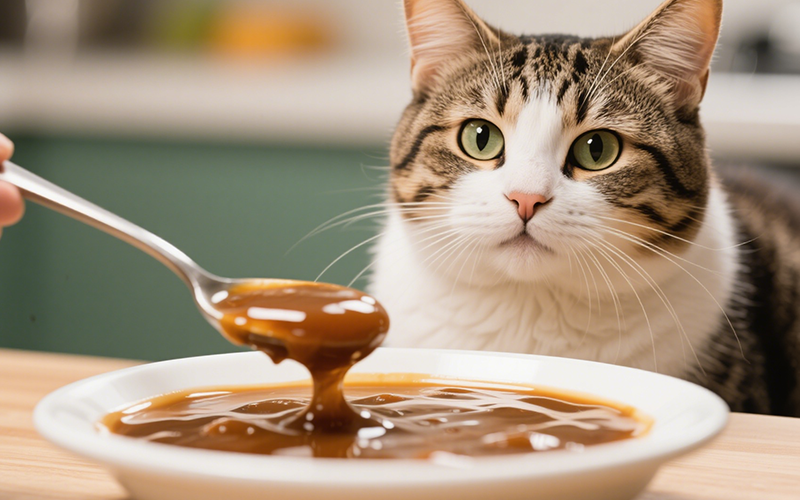
Gravy Danger Zone: Can Cats Eat Gravy Safely? (Vet-Reviewed Warning)
- 16 Apr 2025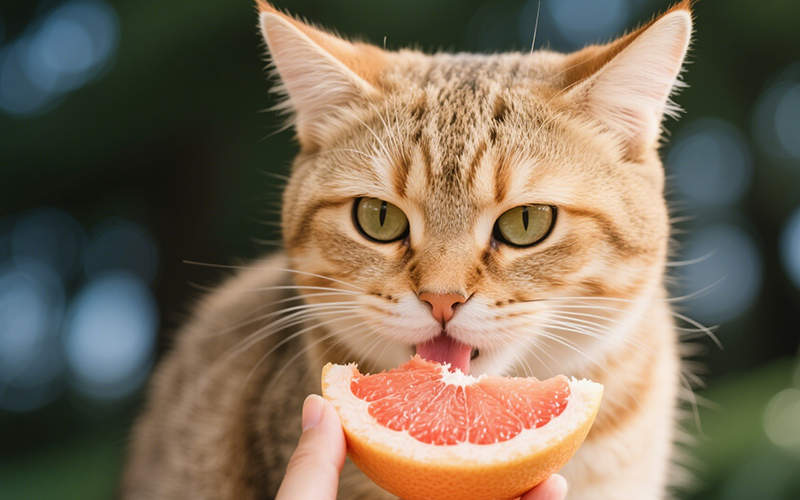
Toxic Temptation: Can Cats Eat Grapefruit? Vet Explains the Dangers
- 16 Apr 2025
